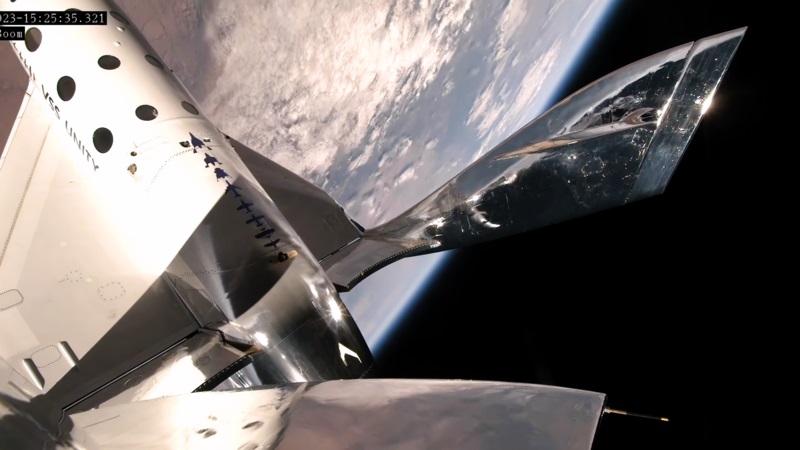A Scientist Helped to Launch Ancient Human Fossils Into Space, and His Colleagues Aren’t Happy
Posted on Categories Discover Magazine

Two ancient human fossils belonging to Australopithecus sediba and Homo naledi made a recent trip to suborbital space in a gesture that has roiled the scientific community.
On Sept. 8, 2023, an A. sediba shoulder bone and a H. naledi finger bone soared into the heavens aboard a Virgin Galactic private spacecraft, alongside three commercial passengers, the third such crew in Virgin’s history. The fossils spent about 5 minutes in space while stowed inside a cigar-shaped, carbon fiber container in the possession of one of the paying passengers – Tim Nash, a South African businessman and one of Virgin Galactic’s early investors.
He’s also a friend of Lee Berger, the famed paleoanthropologist who led the discovery of the bones near Johannesburg in South Africa.
While Berger’s son Matthew handed the fossils to Nash shortly before takeoff, it was Lee who secured a special export for them that allowed them to leave the country.
The Case for Blasting Fossils Into Space
In his application to the South African Heritage Resources Agency, he called the mission “a sign of respect by humanity to our African ancestors who gave us the technology, skills and mind that allows this perhaps greatest expression of human technological achievement – the exploration of space.”
Without provided specifics, he added that, “Some scientific studies may also be conducted including the degree of radiation the fossils may take up while in space.”
These bones are among the best-documented in world, he argues, and have been “micro-CT scanned and surface-scanned at the highest resolutions possible,” indicating that virtual copies would remain safe on Earth.
Ancient Human Fossils
A. sediba lived about 2 million years ago and had features that mixed earlier Australopithecus features with newer, more modern ones. As such, these hominids may have served as direct ancestors to Homo sapiens and the Homo genus in general.
H. naledi’s place in the human family is less well understood, although evidence suggests it buried its dead some 300,000 years ago, making it the first other human species to do so.
Read More: When Did Homo Sapiens First Appear?
Scientists React to the Launch
The fossils returned safely to earth, and the institution that normally houses them – the University of the Witwatersrand in Johannesburg – sent out a statement to announce the event.
But as news spread in the following days, criticism arose from many different corners.
“We do not see the scientific merit of this project and question the ethics of potentially damaging these unique materials,” the European Society for the Study of Human Evolution said in a statement. “We urge the responsible stewardship and protection of these irreplaceable scientific resources.”
Rachel King, an archaeologist at University College London, called into question SAHRA’s approval of Berger’s export in an interview with Nature. “What are regulators for, if they’re going to let someone do this?” she said. “It’s potentially a pretty big thing and a pretty big shift.”
“Shooting fossils and extremely important heritage into space?” said Luc Amkreutz, an archaeologist at Universiteit Leiden, on X, the platform previously known as Twitter. “Incredibly sad to think we need this to raise interest.”
In an article for National Geographic, Nash defended the mission, saying that the fossils “are only a very small part of the fossil record, and they have been very well studied. Exploring involves risks. Human advancement requires risks.”
Read More: Ancient Human Ancestors May Have Grown Big Brains Scavenging Bone Marrow